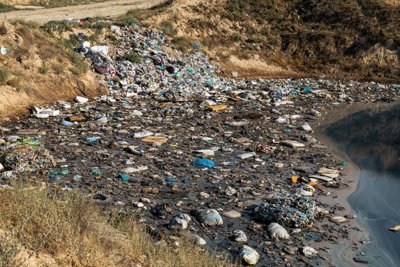Research undertaken by geographers at Queen Mary University of London into the extent and severity of legacy and future pollution risk of coastal historic landfills (CHL) has accelerated awareness of the issue, informed changes to coastal and waste policy, and contributed to new best practice guidelines and recommendations for management of CHLs.
Issue
The Environment Agency (EA) identifies more than 20,000 ‘Historic Landfills’ in England and Wales which pre-date modern environmental regulation and waste management technologies. Many sites are at risk of flooding and coastal erosion, which could have significant effects on ecological health and environmentally sensitive areas.
Approach
The research is underpinned by knowledge on marine pollution and the impact of disturbance events such as flooding, erosion and dredging. This led to the EA and Essex County Council approaching the research team to investigate the potential for coastal realignment along the Essex coast in areas where there are CHLs.
Impact
The team have increased understanding for regulators and policy-makers of CHL waste pollution at national and international levels by reporting findings to the United Nations, EA, Department for Environment, Food, and Rural Affairs, Thames Estuary Assessment Management, and local authorities.
The research has informed public understanding through ‘The Secret Life of Landfill: A Rubbish History’, a BBC4 documentary which attracted over one million views.
The research also contributed to ‘800,000 tonnes: Waste Management and Recycling in Essex’, a National Lottery and Arts Council funded public programme of displays, site tours and discussions run by Focal Point Gallery, Southend.
The research has directly informed local shoreline management practices in Essex and South Suffolk and the Thames Estuary in areas where coastal waste is present and at risk from flooding and/or erosion. Internationally, this work has also led to the Netherlands and Belgium carrying out national assessments of their landfill datasets to evaluate flood and erosion risk.
The research has improved industry awareness. In 2013, the CIRIA – the independent, not for profit provider of good practice guidelines for the construction industry, local authorities and the EA – identified outputs from Queen Mary’s research in its ‘Guidance on the management of landfill sites and land contamination on eroding or low-lying coastlines’.
More information
Institution: Queen Mary University of London
Researchers: Professor Kate Spencer, Dr James Brand
Share this resource
This is an open access article under the terms of the Creative Commons Attribution License (CC BY NC 4.0), which permits use, adaptation, distribution and reproduction in any medium or format, provided the original work is cited and it is for non-commercial purposes. Please contact us for other uses.
How to cite
Royal Geographical Society (with IBG) (2023) Historic coastal landfill and legacy waste. Available at https://rgs.org/coastallandfill Last accessed on: <date>
